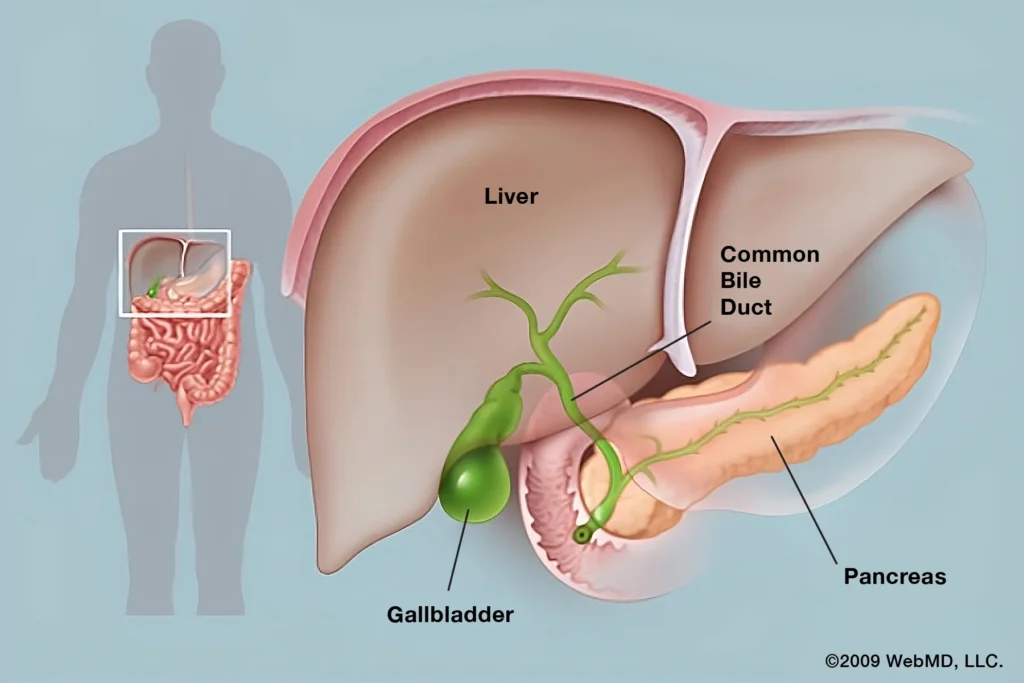
The gallbladder is a small, pear-shaped organ located beneath the liver on the right side of the abdomen. It plays a key role in the digestive system, particularly in the digestion of fats.
Function of the Gallbladder
- Stores bile, a digestive fluid produced by the liver.
- Releases bile into the small intestine (via the bile ducts) when you eat, especially fatty meals.
- Bile helps break down fats and absorb fat-soluble vitamins (A, D, E, K).
🔹 Common Gallbladder Problems
- Gallstones (Cholelithiasis)
- Hardened deposits of cholesterol or pigment in the gallbladder.
- May be “silent” or cause pain, nausea, or complications.
- Cholecystitis
- Inflammation of the gallbladder, often due to a gallstone blocking the cystic duct.
- Symptoms: severe abdominal pain, fever, vomiting.
- Choledocholithiasis
- Gallstones that move into and block the common bile duct.
- Can lead to jaundice, pancreatitis, or serious infections.
- Gallbladder Polyps
- Small growths on the inner wall of the gallbladder.
- Most are benign, but large or growing polyps may require removal.
- Gallbladder Cancer (rare)
- Often diagnosed late due to vague symptoms.
- Risk factors: gallstones, chronic inflammation, gallbladder polyps.
🔹 Symptoms of Gallbladder Disease
- Pain in the upper right abdomen (especially after fatty meals)
- Nausea or vomiting
- Bloating or indigestion
- Fever and chills (if infection is present)
- Jaundice (yellowing of skin or eyes)
🔹 Diagnosis
- Ultrasound (most common initial test)
- CT scan or MRI
- HIDA scan (to assess gallbladder function)
- Blood tests (liver function, white cell count, pancreatic enzymes)
🔹 Treatment Options
🏠 Lifestyle & Diet Management
- Eat low-fat, high-fiber meals
- Maintain a healthy weight
- Avoid rapid weight loss
💊 Medications
- Rarely used; include bile acid pills like ursodiol to dissolve cholesterol stones (slow and not always effective)
🩺 Surgical Treatment
Cholecystectomy – surgical removal of the gallbladder
- Laparoscopic cholecystectomy (minimally invasive): Most common
- Open surgery: Used in complex or emergency cases
👉 Life without a gallbladder is normal; the liver still makes bile, which flows directly into the intestine.
🔹 Life After Gallbladder Removal
- Most people digest food normally
- Some may experience temporary diarrhea or bloating
- Small, frequent, low-fat meals help during recovery
- Avoid fatty, greasy, or spicy foods initially
❗️When to See a Doctor
- Recurring pain in the upper abdomen, especially after eating
- Signs of infection: fever, chills, nausea
- Yellowing of skin or eyes
- Vomiting or inability to eat



